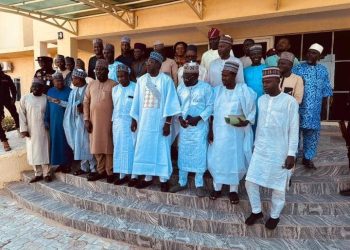By Nkechi Eze
In a bid to bolster disaster preparedness and response capabilities ahead of the peak rainy season, the National Emergency Management Agency (NEMA) has conducted a full-scale flood response simulation exercise along the banks of the River Niger in Ogbaru Local Government Area, Anambra State.
The simulation, code-named “Ex Ide Mmili Odach” was designed specifically for the South-East geopolitical zone, in light of the 2025 Seasonal Flood Outlook released by the Nigeria Hydrological Services Agency (NIHSA), which lists Anambra, Imo, and Abia States as among the high-risk areas likely to experience severe flooding.
The exercise, conducted under realistic emergency conditions, brought together a wide range of stakeholders from across the emergency management spectrum, simulating a coordinated multi-agency response to a hypothetical major flood event affecting multiple communities.

Speaking at the exercise, the DG NEMA Zubaida Umar underscored the agency’s commitment to proactive disaster risk management, noting that flood disasters remain one of the most persistent and damaging natural hazards in Nigeria, often resulting in significant loss of life, displacement, destruction of infrastructure, and long-term disruption of livelihoods.
“The purpose of this simulation is to test our operational readiness, identify gaps in coordination, and evaluate the efficiency of our emergency response plans,” she said.
“We are particularly focused on inter-agency collaboration and community engagement to ensure that no one is left behind when disaster strikes.”
The simulation featured a range of real-time emergency response activities, including rescue operations using boats, casualty evacuation, first aid and triage, emergency communication protocols, and crowd control, all executed under simulated flood conditions.
Participating agencies included the Nigerian Armed Forces, Nigeria Police Force, Federal Road Safety Corps (FRSC), Nigeria Security and Civil Defence Corps (NSCDC), Federal Fire Service, Department of State Services (DSS), and the Nigerian Red Cross Society.
At the state and local level, the exercise drew the active participation of the Anambra and Ebonyi State Emergency Management Agencies (SEMAs), officials of Ogbaru Local Government, members of the Local Emergency Management Committee (LEMC), community leaders, local youth associations, boat operators, and a host of volunteers.
Officials emphasized that the inclusiveness of the exercise was deliberate, given the frontline role local communities play during emergencies. They also pointed out that such simulations are crucial in ensuring that early warning messages are effectively translated into early action.
“This is not just a technical drill,” said a NEMA field coordinator. “It is a message to the communities at risk that preparedness saves lives. We urge local residents to take flood alerts seriously, follow official guidance, and work closely with their local emergency committees.”
Community leaders present expressed appreciation for the initiative, calling on NEMA to conduct similar exercises in other flood-prone local government areas and provide more training to local emergency responders.
As climate change and rapid urbanization continue to heighten the frequency and impact of natural disasters in Nigeria, particularly flooding, exercises like Exercise Ide Mmili Odach are part of NEMA’s broader national strategy to build resilience, promote disaster risk reduction, and strengthen community-level preparedness.
With several states on alert and the rainy season intensifying, NEMA reiterated its call for heightened vigilance, early evacuation from flood plains, proper waste disposal, and adherence to building regulations to prevent avoidable losses.
The agency also affirmed that it will continue to work closely with state governments, local authorities, and international partners to improve early warning dissemination, deploy lifesaving equipment, and build public awareness around flood risks in the coming months.
















